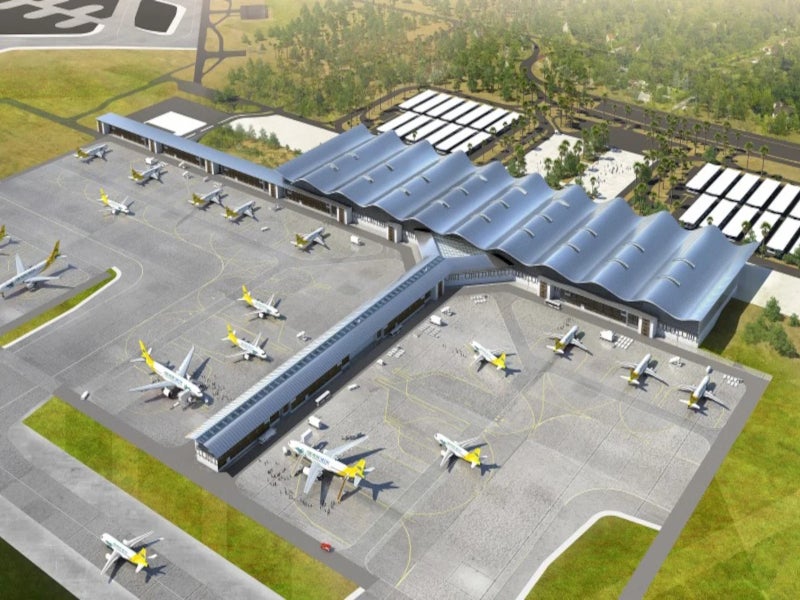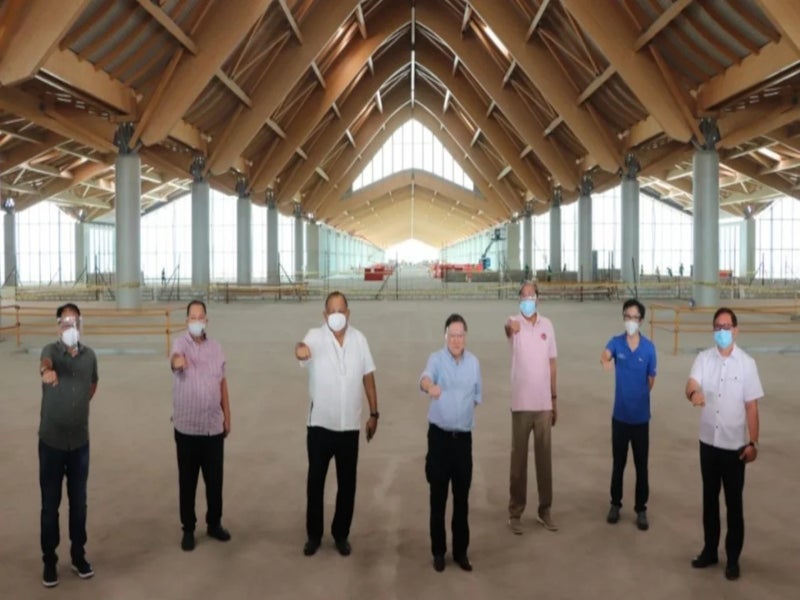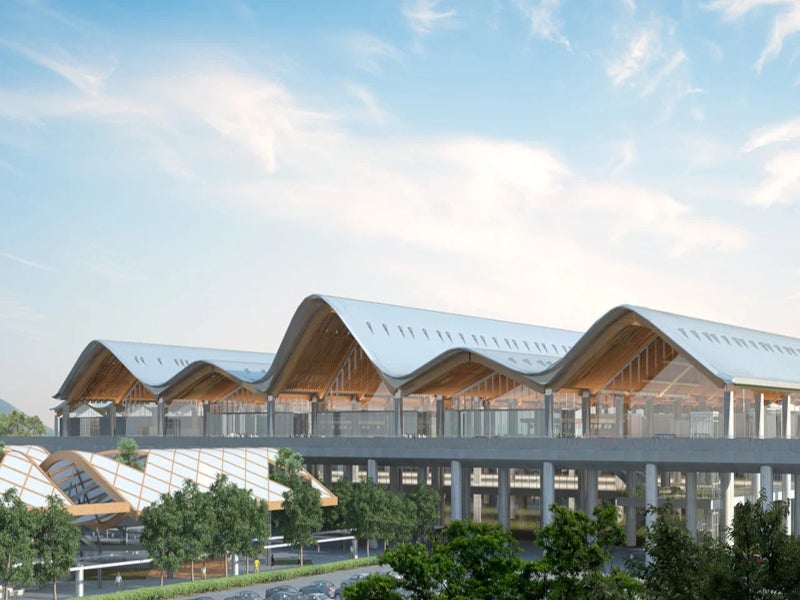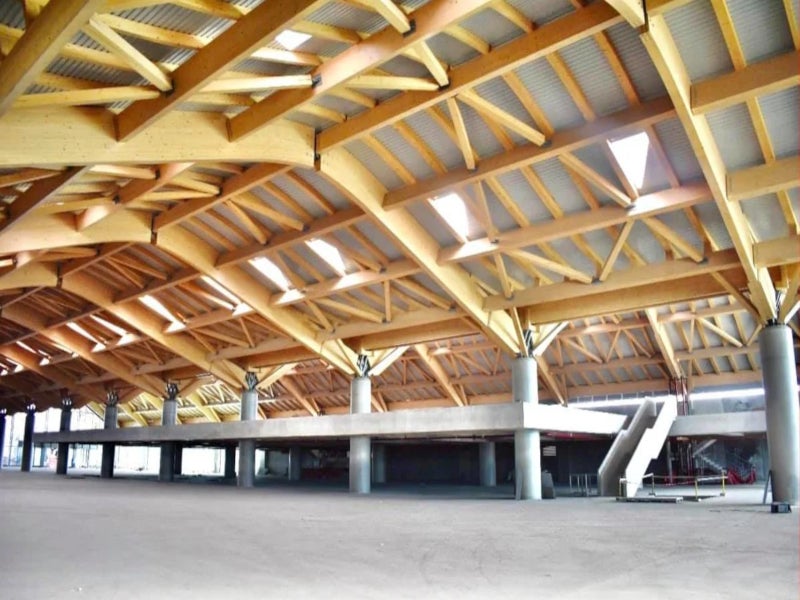The new passenger terminal building of the Clark International Airport (CRK) in the province of Pampanga, Philippines, increased air transport capacity for the Greater Capital Region.
The ground-breaking for the facility took place in December 2017. The construction of the new passenger terminal building was completed in October 2020 and it became operational in May 2022.
The total investment in the construction of the new terminal was approximately PHP19.25bn ($383m).
The new terminal can accommodate eight million passengers annually, which is twice that of the previous terminal, increasing the total airport capacity to 12.2 million passengers. It enhanced the air travel experience and connectivity of Central and Northern Luzon to the rest of the Philippines and the world.
The project decongested the Ninoy Aquino International Airport serving Manila and its surrounding metropolitan area.
Location of Clark International Airport
CRK is located within the Clark Freeport Zone’s Civil Aviation Complex in Pampanga and functions as the primary entry point to the Northern and Central Luzon Regions.
The airport is conveniently accessible through the Subic-Clark-Tarlac Expressway (SCTEX), linking the North through the Tarlac-Pangasinan-La Union Expressway (TPLEX), as well as providing connectivity to Metro Manila and the Southern Luzon region via the North Luzon Expressway (NLEX).
Connected to the Manila-Clark Railway Station, the travel time between Metro Manila and the airport has been reduced to less than 60 minutes.
Terminal building development details
The Philippines’ Department of Transportation (DOTr) and the Bases Conversion and Development Authority (BCDA) initiated the bidding process for the engineering, procurement, and construction (EPC) contract of the new terminal building in August 2017.
The terminal expansion was carried out by the Philippines Government as part of the country’s Build, Build, Build (BBB) programme. The infrastructure was built by the government using its own funds under the model and operations and maintenance (O&M) was handed over to the private sector.
A 25-year agreement for the O&M of the entire CRK facility, including the new terminal building, was finalised between the BCDA and the North Luzon Airport Consortium (NLAC), comprising Changi Airport of Singapore, Filinvest, JG Summit and Philippine Airport Ground Support Solutions, in February 2019.
IFC, a member of the World Bank Group, played a key role as the lead transaction advisor to BCDA in assisting with the structuring and tendering of both the EPC and O&M contracts.
Luzon International Premier Airport Development (LIPAD), the special purpose vehicle company established by the NLAC, was awarded the project for the O&M of the airport in August 2019. The project includes three components, the previous terminal, the new terminal building, the management of the surrounding leased areas for the aviation industry, and more.
Clark International Airport new passenger terminal building details
The new four-level terminal building is spread across 110,000m² (1.18 million square feet) and houses both domestic and international terminals of CRK.
The terminal features 18 passenger boarding bridges. The level one apron area includes domestic and international remote gates, as well as baggage reclaim halls. Level two includes arrivals corridors, transfers, immigration, baggage handling systems, and fixed link bridges.
Level three is dedicated to departures and houses a forecourt, check-in, security checks, emigration, retail space and gate lounges. The fourth level (mezzanine) features a food and beverage area and commercially important person (CIP) lounges.
An event space installed with lanterns and art installations was created within the building. The terminal also features 3,881 parking spaces and 20 bus parking spaces.
The terminal has expanded toilet facilities, including family rooms, and gender-neutral and persons with disabilities (PWD)-friendly restrooms. Additionally, all boarding gates are equipped with escalators and elevators to ensure seamless access for all passengers.
New passenger terminal building design
The design of the new terminal aims to showcase Filipino culture with the facade design reflecting the wavy silhouette of Mount Arayat, Mount Pinatubo and the Sierra Madre Mountain range.
The architecturally unique roof structure features a distinct design language at three different elevations, 12m, 16m, and 20m above the highest concrete ceiling. The different roof pitches echo the dramatic silhouettes of the nearby volcanic mountain landscape.
The tallest arch structure is bordered by arches standing at 12m and 16m in height while the remaining arches are 12m tall.
New terminal building features
CRK’s new passenger terminal building features contactless options, including self-service kiosks for passenger check-in and self-bag drops to minimise contact between passengers and airport staff.
The terminal places a strong emphasis on technology to enhance passenger safety and aircraft on-time performance. It features a state-of-the-art visual docking guidance system, which enables pilots to park aircraft precisely and safely, even in adverse weather conditions, using advanced laser technology.
Sustainable features of the new terminal building
The new terminal building at CRK has been awarded a preliminary EDGE certificate by the Philippine Green Building Initiative (PGBI). The design of the building incorporates resource-efficient technologies.
An energy-efficient air conditioning system, roof insulation, and LED lighting have been installed in the terminal to reduce energy consumption.
Additionally, water-efficient plumbing fixtures and a rainwater harvesting system have been implemented to decrease water usage. The measures not only reduce the terminal’s operating expenses but also its carbon footprint.
The cathedral ceiling of the airport is constructed from white spruce sourced from sustainable forests.
Contractors involved
The DOTr and the BCDA awarded the EPC contract to Megawide-GMR Construction joint venture, a consortium of Megawide Construction and India’s GMR Infrastructure, for the construction of the passenger terminal building in December 2017. Peri provided civil engineering services for the project.
LIPAD appointed Populous as the lead interior designer and retail planner for the terminal building in October 2020. Populous teamed up with Casas+Architects for the project.
Meinhardt won a contract to provide civil and structural / mechanical, electrical and plumbing engineering services.
Budji Layug and Royal Pineda provided the architectural concept for the new terminal.
Construction company Egis Group provided the review, certification, and monitoring services of the vertical and horizontal works, the mechanical, electrical and plumbing (MEP), including special airport systems and equipment installation, from design to construction phase.
Integrated Design Association, an architectural company, was involved with the roof architecture of the new terminal building.
Wood and timber construction company Rubner manufactured, delivered and assembled around 6,500m³ of glued laminated timber for the project.







